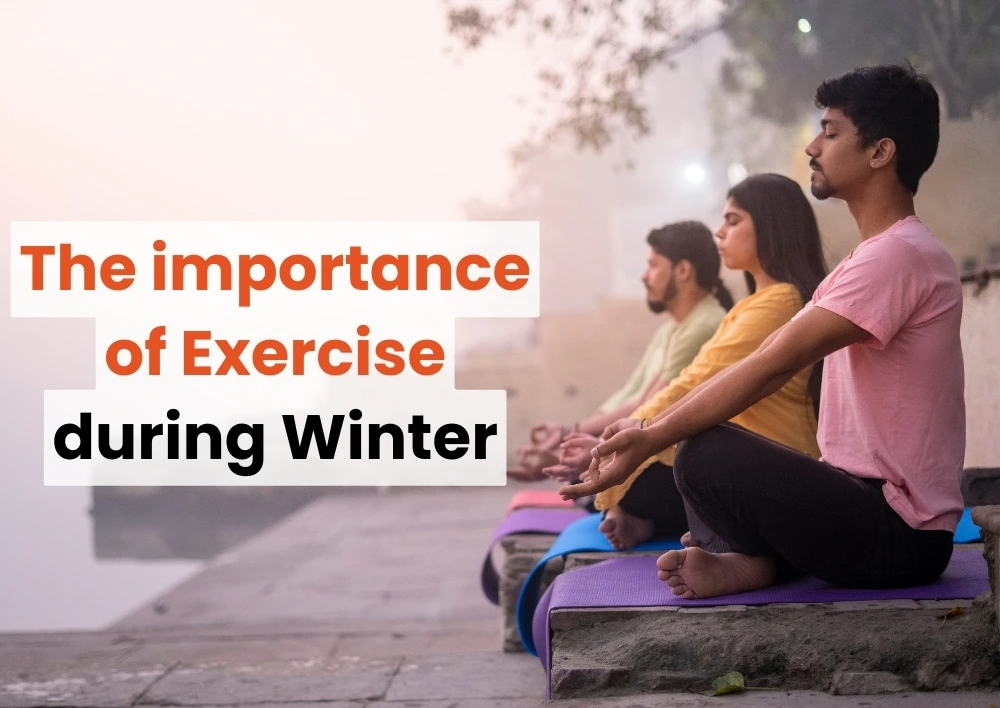The Importance of Exercise During Winter
Winter brings with it a drop in temperature, shorter days, and sometimes an increase in joint pain, especially for those with pre-existing orthopedic conditions. Cold weather can make us avoid physical activity and take a break from exercise. However, maintaining an active lifestyle during the winter months is important, especially when it comes to joint health. Regular exercise during winter not only strengthens your bones and muscles but also plays an important role in managing and preventing joint issues, arthritis, and even back pain. In this blog post, the renowned orthopedic doctor in Gurgaon at Miracles Apollo Cradle/Spectra shares insights into the importance of exercises in winter and how winter workouts can help keep you pain-free throughout the chilly season.
Importance of Exercise During Winter
-
Helps to Prevent Joint Stiffness: Winter temperatures can lead to a reduction in joint flexibility, making it more difficult for your body to move comfortably. Cold weather causes the tissues around joints to tighten, leading to stiffness and discomfort. For people with arthritis or other joint conditions, the winter season can worsen these issues, making it harder to move and perform daily tasks. Doing Workouts in winter helps by improving circulation to the joints and keeping the muscles around the joints flexible. Regular physical activity helps prevent stiffness, ensuring that the range of motion in your joints remains optimal. Whether it’s stretching, walking, or light aerobic exercise, movement keeps your joints greased and active.
-
Promote Bone Health: Our bones naturally become weaker as we age, and the colder months can have an additional impact, especially for people who don’t get enough sunlight. In winter, when the days are shorter, and we spend more time indoors, it’s easy to suffer from vitamin D deficiency. Doing regular exercise in the winter season can help strengthen bones by promoting bone density. Weight-bearing exercises like walking, hiking, or strength training stimulate bone growth and can help reduce the risk of osteoporosis, a condition where bones become weak and prone to fractures. Staying active helps maintain balance, which can prevent falls and fractures, especially in slippery conditions.
-
Increases Blood Flow to Muscles and Joints: In cold weather, the body naturally saves heat by reducing blood flow to extremities, which can make muscles feel tight and fatigued. This can lead to an increased risk of injury, especially when jumping into an intense workout without proper preparation. When you exercise, your body’s blood flow increases, ensuring that oxygen and nutrients are delivered to your muscles and joints. This can reduce muscle stiffness and improve your body’s overall flexibility. To prevent injuries, start with a proper warm-up before heading into more intense workouts.
-
Maintains Healthy Weight: Winter can also be a time when we tend to overeat and become less active, which can lead to weight gain. Extra weight puts additional stress on your bones and joints, especially weight-bearing ones such as the hips, knees, and spine. Exercise during winter helps maintain a healthy weight and reduces the stress placed on your joints. Weight management is an important factor in avoiding joint pain, especially for those with conditions like osteoarthritis. Keeping excess weight off can significantly reduce the wear and tear on your joints and preserve their function over time.
-
Relieves Pain and Inflammation: For individuals suffering from conditions like arthritis or fibromyalgia, winter can be a particularly painful time. Cold weather usually worsens inflammation in the joints, leading to increased pain and discomfort. Low-impact exercises such as swimming, cycling, or even yoga are the best exercise for winter and can reduce the inflammatory response in the body. These activities help the body release endorphins that not only alleviate pain but also boost your mood. Regular movement reduces the stiffness and discomfort associated with these conditions, allowing you to manage pain more effectively.
Different Types of Exercises to Do in the Winter
Here are some exercises that can be especially beneficial for your bones and joints during the winter season:
-
Low-Impact Aerobic Exercises: When the cold weather makes it difficult to get outside, indoor aerobic exercises can help you stay active. These exercises may include stationary cycling, and indoor walking on a treadmill are great for cardiovascular health while being gentle on the joints. These exercises help maintain mobility without putting undue stress on your joints.
-
Strength Training: Strength training is key to building muscle and supporting your bones. It helps increase muscle mass, which in turn provides better support for your joints. You don’t need heavy weights to benefit from strength training. Bodyweight exercises such as squats, lunges, and push-ups are effective, or you can use resistance bands for added difficulty. Strength training should focus on major muscle groups, including the legs, back, and core, to support overall body strength.
-
Stretching and Yoga: Yoga is an excellent practice for improving flexibility, reducing stiffness, and promoting joint mobility. It is especially effective in winter when tight muscles and joints can cause discomfort. Incorporating yoga into your winter routine can help relieve muscle soreness, improve posture, and increase the range of motion in the joints. Stretching exercises, such as gentle leg and arm stretches, also help maintain joint flexibility and muscle health. Stretching before and after exercise helps prepare your muscles for physical activity and promotes recovery.
-
Walking: Walking is a weight-bearing activity that can improve bone density and strength, and it’s also great for joint health. If walking outside in the cold feels unappealing, consider walking indoors at a mall or on a treadmill. Even a brisk 30-minute walk can have a positive impact on your health during the winter months.
Different Ways To Exercise in Winter Safely
While staying active is important, winter also comes with some unique challenges, such as icy sidewalks and unpredictable weather conditions. Here are a few tips to keep in mind when exercising in winter:
-
Layer Up: Wear several layers of moisture-wicking clothing to help regulate your body temperature. Make sure to cover your hands, feet, and head, as they are particularly sensitive to the cold.
-
Warm Up Properly: It’s important to properly warm up your muscles before you start your workout, especially in the cold. Take 5–10 minutes to do gentle stretching or light cardio to get your body moving and prepare your muscles for more intense exercise.
-
Be Mindful of Slippery Surfaces: If you are exercising outside, wear shoes with good traction, or consider exercising indoors if conditions are unsafe.
-
Stay Hydrated: Even in the winter season, it’s essential to drink plenty of water. Because the cold air can still dehydrate your body, so make sure to stay hydrated before, during, and after exercise.
-
Take Breaks if Needed: Listen to your body and take breaks if you’re feeling too cold or fatigued. It’s better to rest and warm up than to push through and risk injury.
Conclusion:
Winter may bring extra challenges when it comes to staying active, but it’s also a perfect time to focus on your joint health. Regular exercise during winter can help combat joint stiffness, improve bone strength, manage weight, and alleviate pain. Whether you prefer indoor activities or outdoor winter sports, the key is to stay consistent and choose activities that suit your abilities and interests.
By incorporating exercise into your daily routine, you are taking a proactive approach to caring for your bones, joints, and muscles. If you have any concerns or pre-existing musculoskeletal problems, Consult with an ortho doctor near you at Miracles Healthcare before starting a new exercise routine. Stay active,and let winter be a season of strength and well-being!













Was the information useful?
0 0